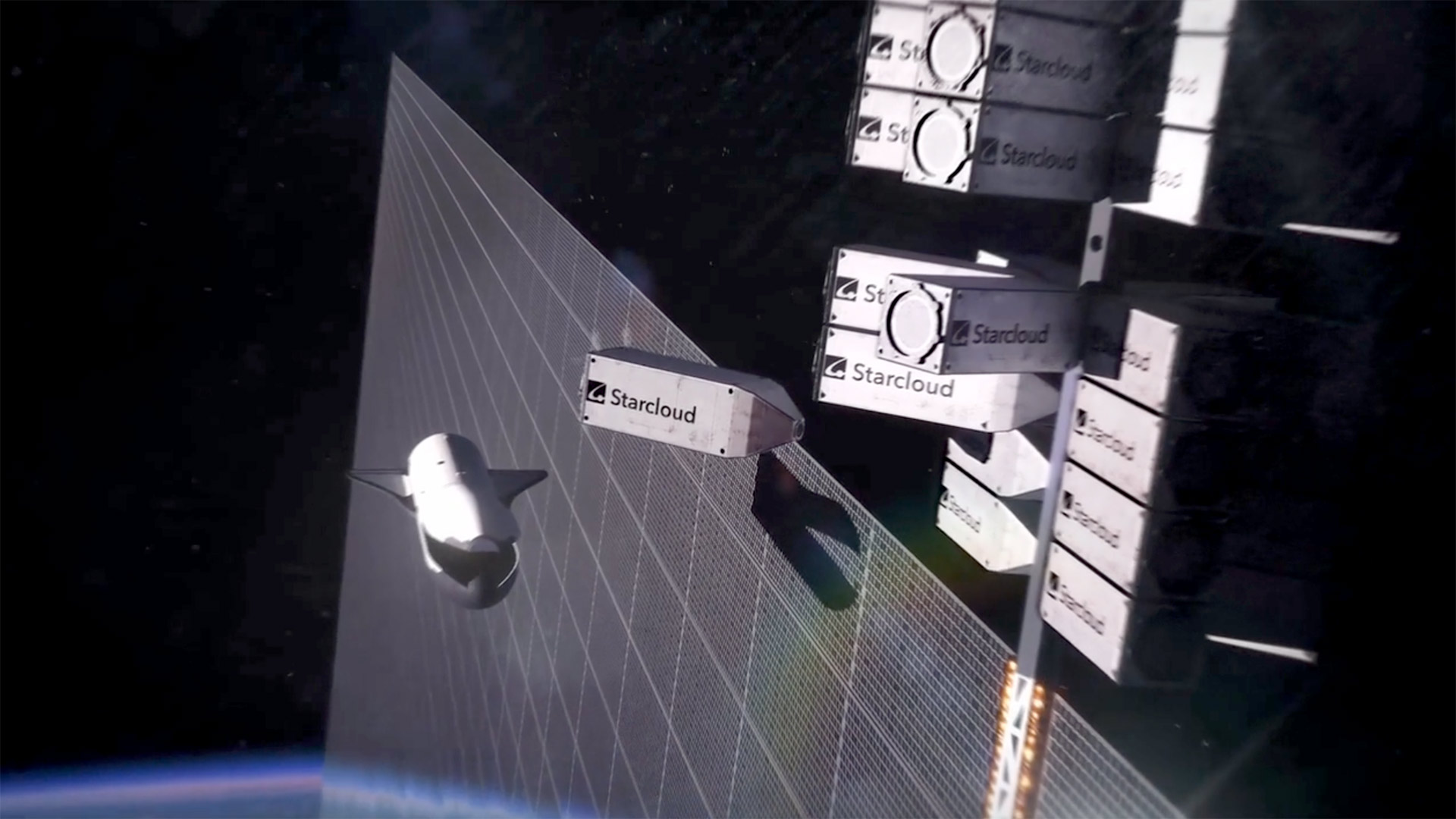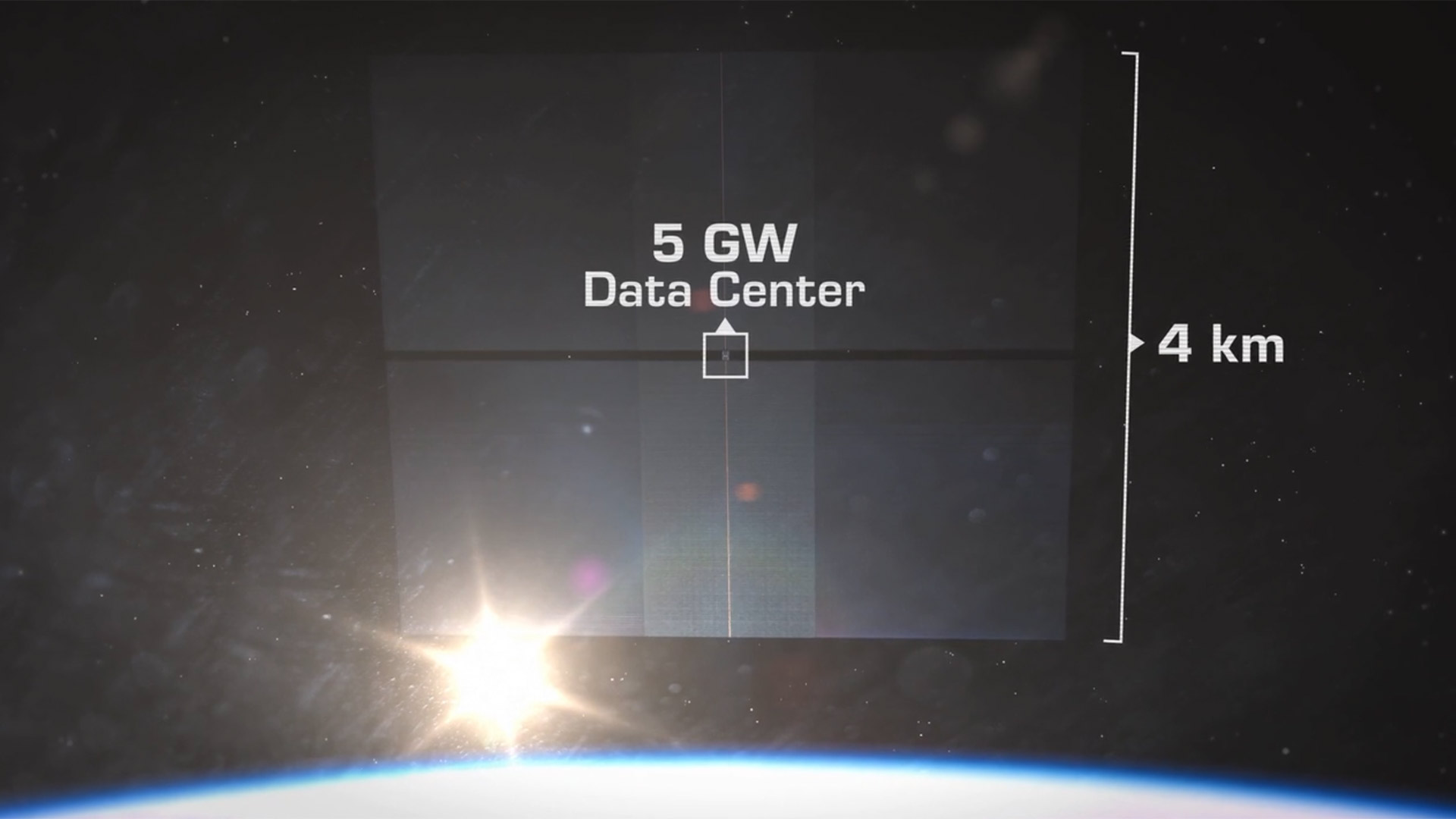Nvidia's H100 GPUs are going to space — Crusoe and Starcloud pioneer space-based solar-powered AI compute cloud data centers
Space age partners claim the H100 delivers ‘100x more powerful GPU (AI) compute than has been in space before.’

The first Nvidia H100 GPUs are heading into space next month. This out-of-this-world news comes as AI factory company, Crusoe, reveals its plans to become “the first public cloud operator to run workloads in outer space.” The orbital Crusoe Cloud deployment will be powered by Nvidia H100 GPUs and AI accelerators in strategic partner Starcloud’s AI data center satellites.
Why have AI data centers in space?
Crusoe and Starcloud share an energy-first vision of an AI data center infrastructure that leverages solar power in space. The rays of energy-rich light emitted by the sun are unencumbered by the Earth’s atmosphere in the Starcloud’s orbit. Thus, companies that establish these kinds of resources in space can enjoy “almost unlimited, low-cost renewable energy.”
Estimates suggest space-based solar-powered data centers will benefit from 10x lower energy costs (including launch cost) vs those on Earth.
As you can see in our embedded image, space allows for massive solar panel arrays, with no concerns about land use. Moreover, operating such systems puts no strain on the Earth’s energy grid. However, we would be interested to learn more about GPU cooling in space-based data centers, given that there is no air for the Earth-like traditional convection of heat, but also very little heat. Nvidia claims Starcloud will use the vacuum of deep space as "an infinite heat sink."
Crusoe and Starcloud
Crusoe has a long history of co-locating its compute infrastructure near novel energy sources. Thus, GPUs in space are just a logical step for the company, albeit quite a large one. Cully Cavness, co-founder, president and COO of Crusoe, sai,d "By partnering with Starcloud, we will extend our energy-first approach from Earth to the next frontier: outer space."
Starcloud is a Redmond-based Nvidia Inception program backed company. It is focused on building data centers in space, scalable to gigawatt capacities, making it a natural fit for Crusoe’s ambitions.
“Having Crusoe as the foundational cloud provider on our platform is a perfect alignment of vision and execution,” said Philip Johnston, CEO of Starcloud. “Crusoe's expertise in building rugged, efficient, and scalable computing solutions makes them the ideal partner to pioneer this new era.” Johnston also underlined the possibilities of unlocking cloud computing power in space for research, discovery, and innovation.
Get Tom's Hardware's best news and in-depth reviews, straight to your inbox.
The partners seem to have even more ambitious plans, going forward, with regard to scaling. However, at this stage, it is rather premature to talk of plans more astronomical than those already sketched out from now until early 2027.
Space data center timescales
Starcloud will be the first to launch Nvidia H100s into space in November 2025. Crusoe will deploy its Crusoe Cloud service on a Starcloud satellite scheduled to launch in late 2026. Subsequently, Crusoe plans to offer limited GPU capacity from space by early 2027, thus “pioneering a new paradigm for AI factories.”

Follow Tom's Hardware on Google News, or add us as a preferred source, to get our latest news, analysis, & reviews in your feeds.

Mark Tyson is a news editor at Tom's Hardware. He enjoys covering the full breadth of PC tech; from business and semiconductor design to products approaching the edge of reason.
